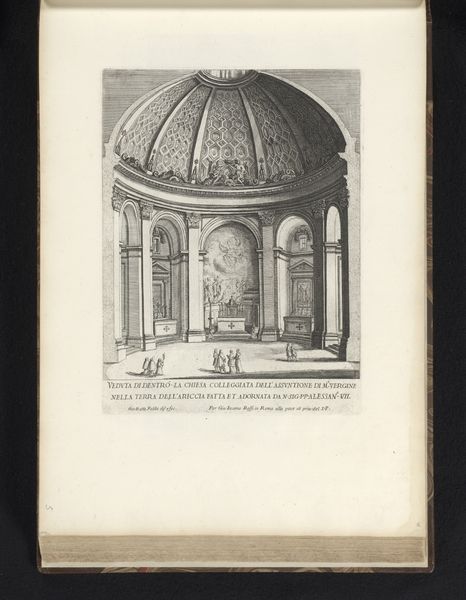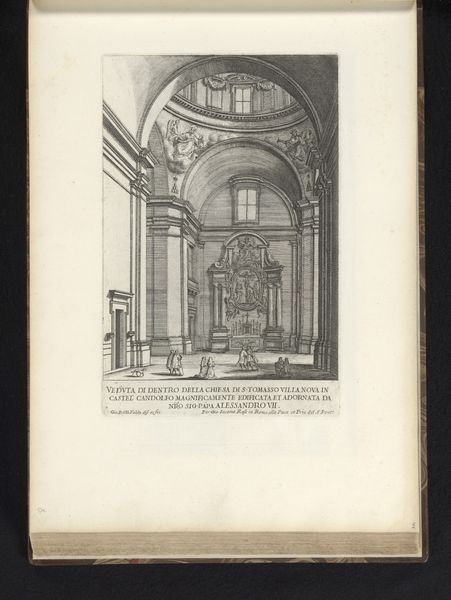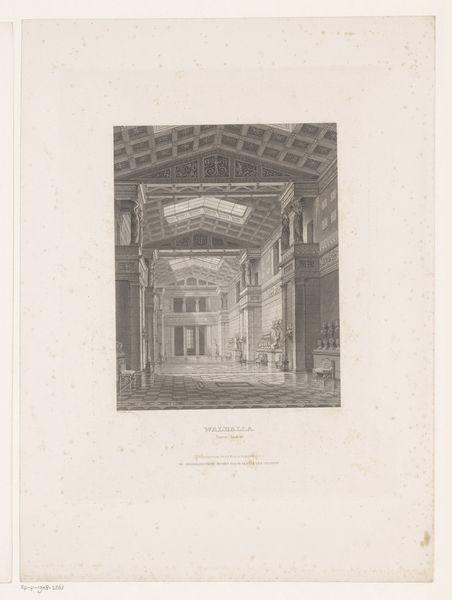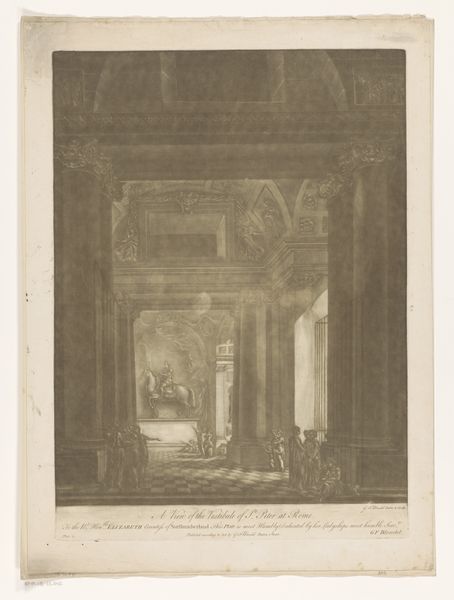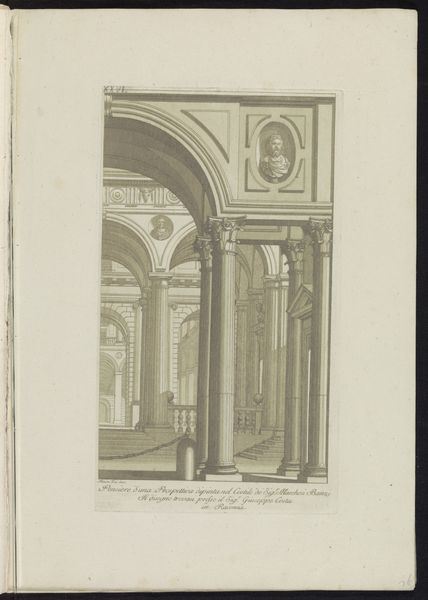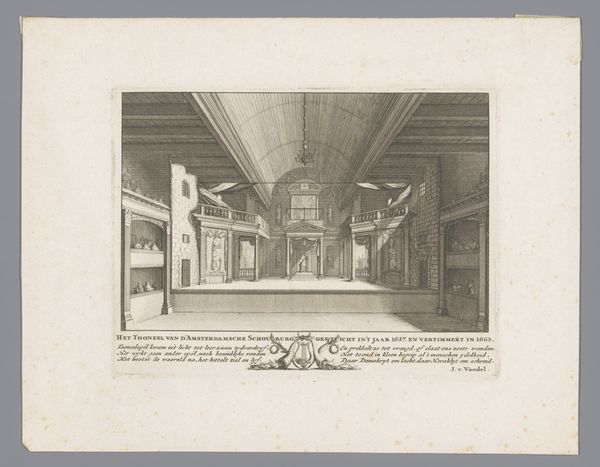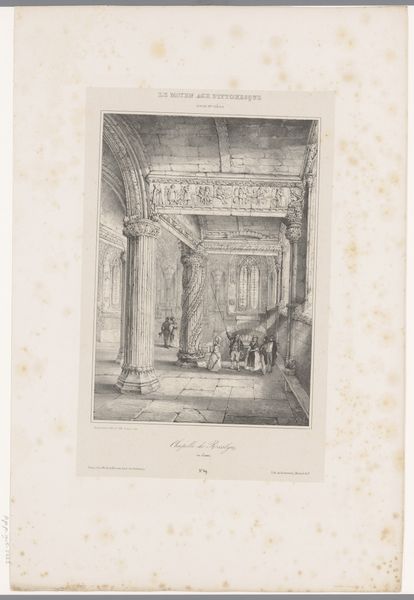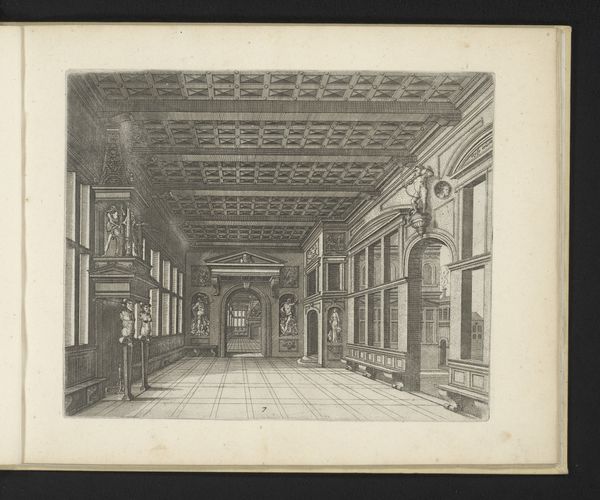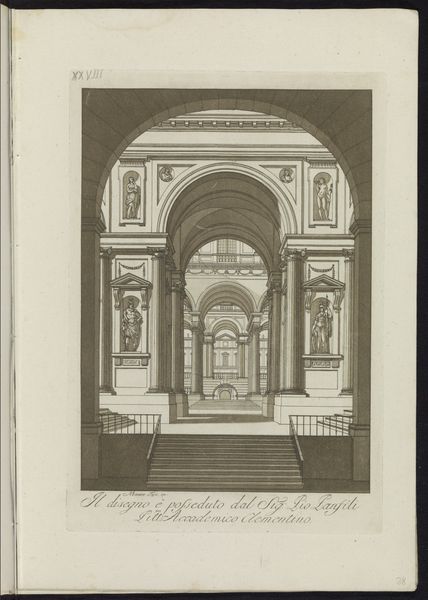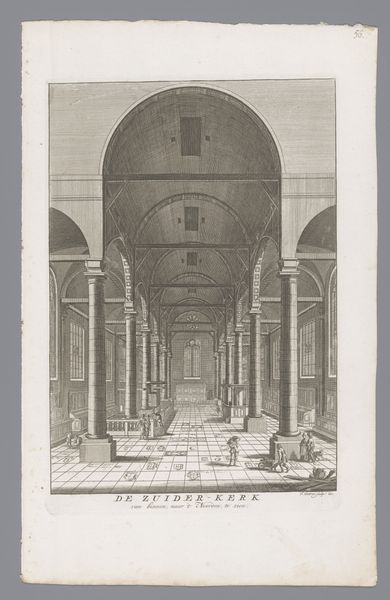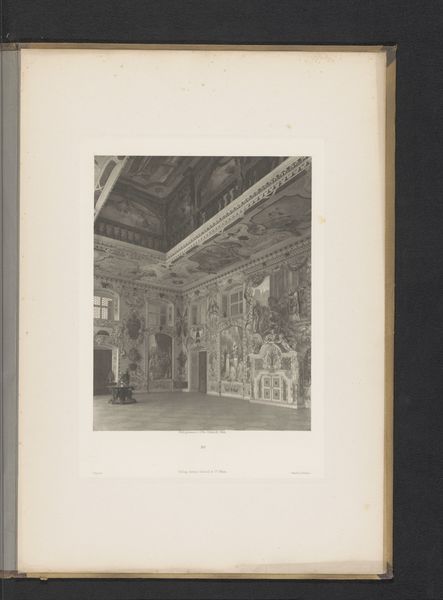
engraving
#
old engraving style
#
ancient-egyptian-art
#
figuration
#
ancient-mediterranean
#
line
#
history-painting
#
engraving
Dimensions: height 267 mm, width 180 mm, height 414 mm, width 289 mm
Copyright: Rijks Museum: Open Domain
Editor: This engraving from 1787, titled "Egyptische grafkamer met hiëroglyfen," or "Egyptian tomb chamber with hieroglyphs," by Cesare Massimiliano Gini, feels quite staged. It reminds me of theater set, especially with the figures placed so deliberately. What is your take on this work? Curator: That's a great initial observation! It does have that theatrical quality. It makes me think about the rise of Egyptomania in the late 18th century. This engraving is not just an innocent depiction, but part of a broader European fascination with, and arguably a projection onto, ancient Egypt. Consider who is viewing this "Camera Sepulcrale Egizia". What are they meant to take away, and who is really the audience here? Editor: So, you’re saying it’s less about accurate representation and more about constructing a certain narrative about Egyptian culture for a European audience? Curator: Exactly. We must remember how such images functioned within the context of colonialism and cultural appropriation. The artist is depicting a tomb, a space of the dead, filtered through a European gaze. The "discovery" and documentation of such sites was, in itself, an act of power. The depiction focuses on static, almost lifeless figures and architecture. Doesn't this "stillness" almost reinforce a narrative of a bygone era, implicitly justifying contemporary European dominance? Editor: That's a really important point about justifying dominance. I hadn't considered how the representation of history itself can be a form of power. Curator: Think about the figures themselves. The inclusion of what appear to be European visitors further emphasizes this dynamic. What is their relationship to the space? Do they inhabit or desecrate it? And ultimately, how does this early representation feed into later stereotypes about ancient Egypt and its relationship to the West? Editor: That definitely gives me a lot to think about regarding the gaze of the artist and the viewer in understanding this work. Thank you for your insight. Curator: And thank you for engaging with such insightful questions, it's critical we look critically at historical depictions in this light.
Comments
No comments
Be the first to comment and join the conversation on the ultimate creative platform.
